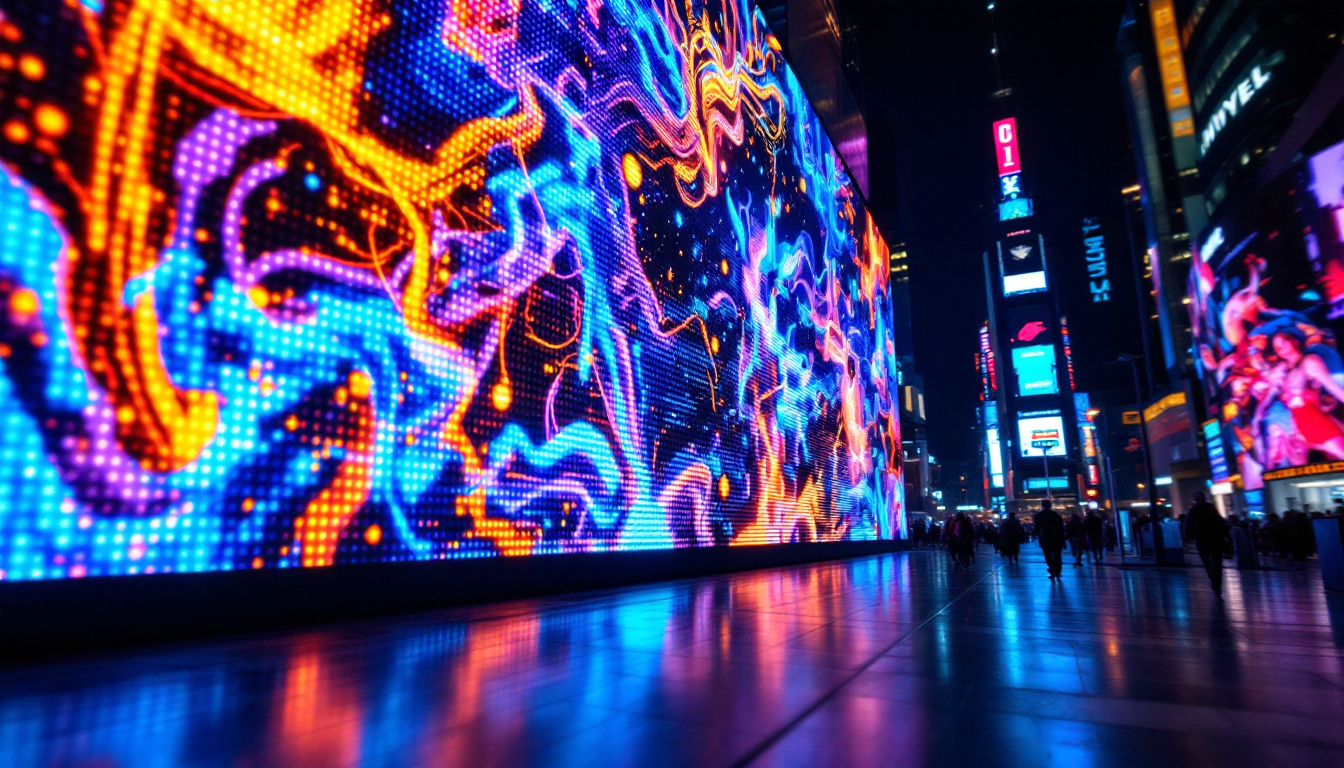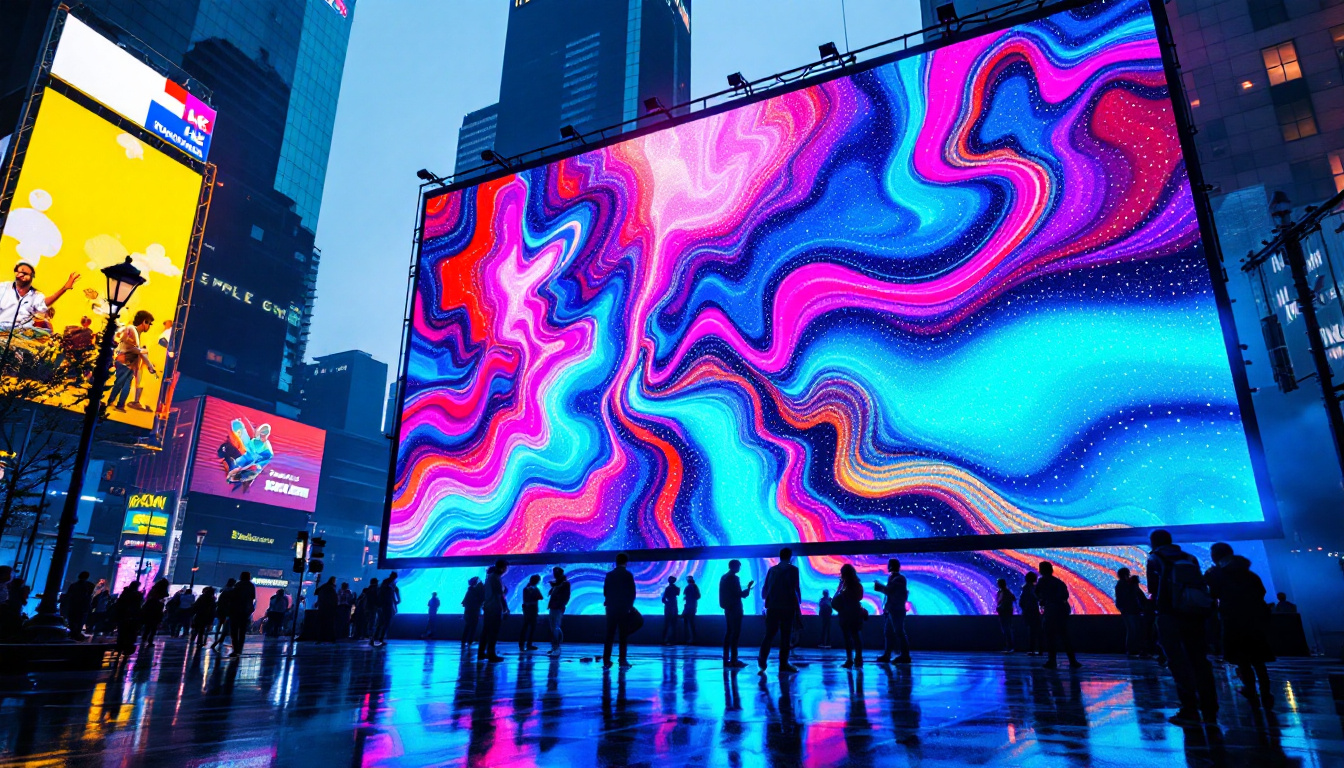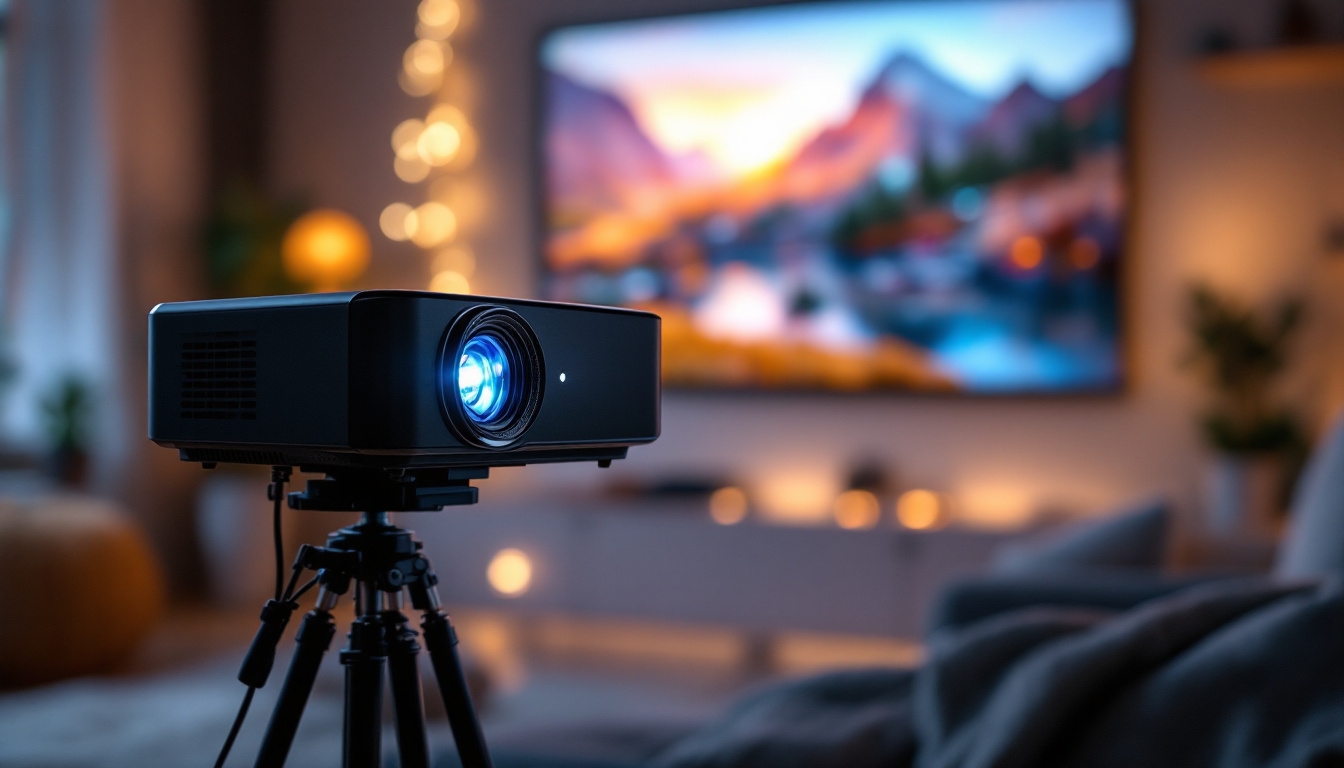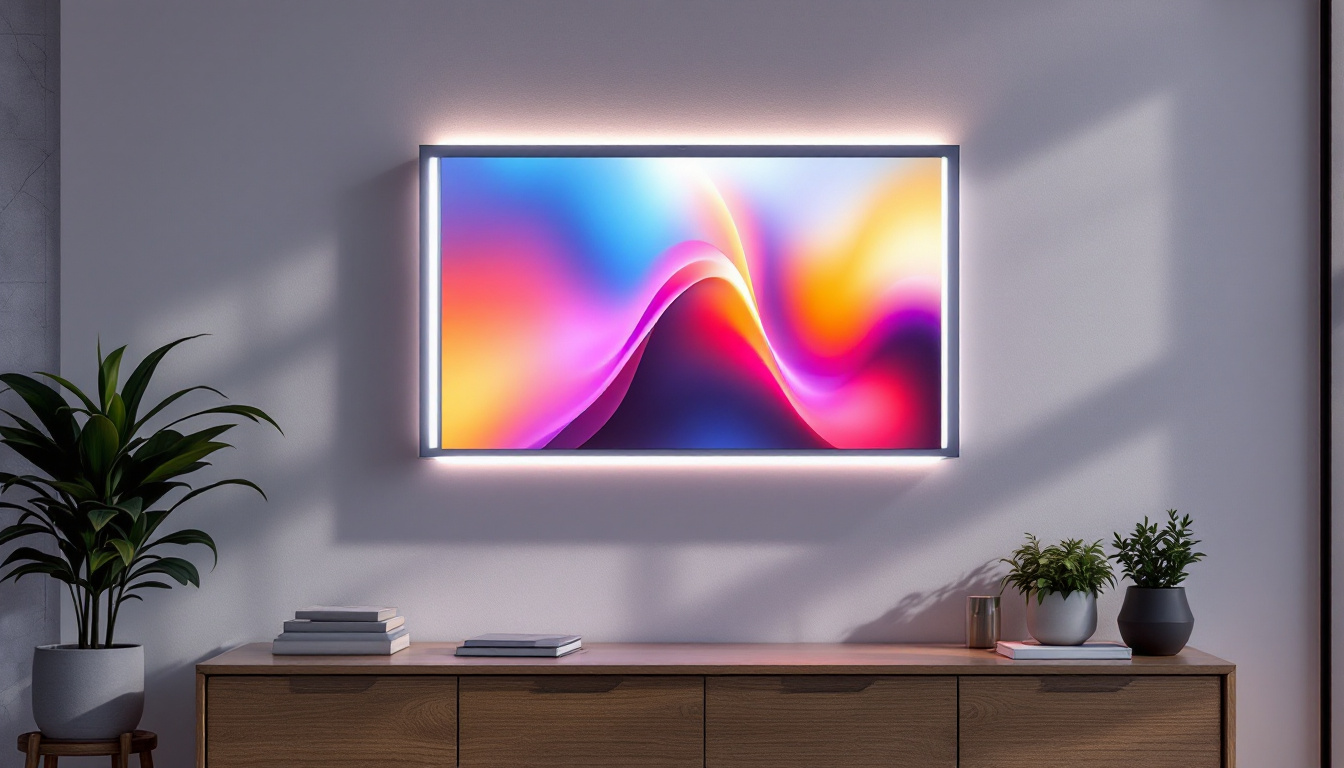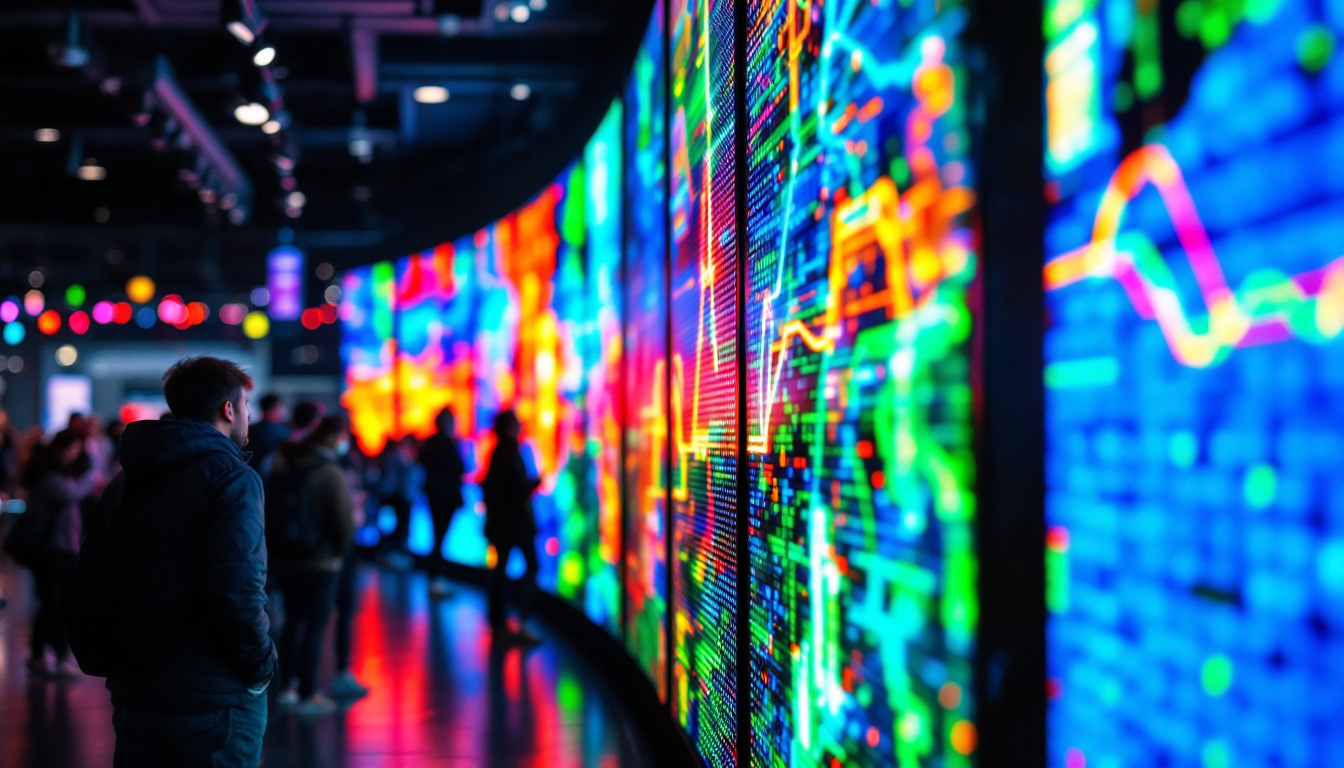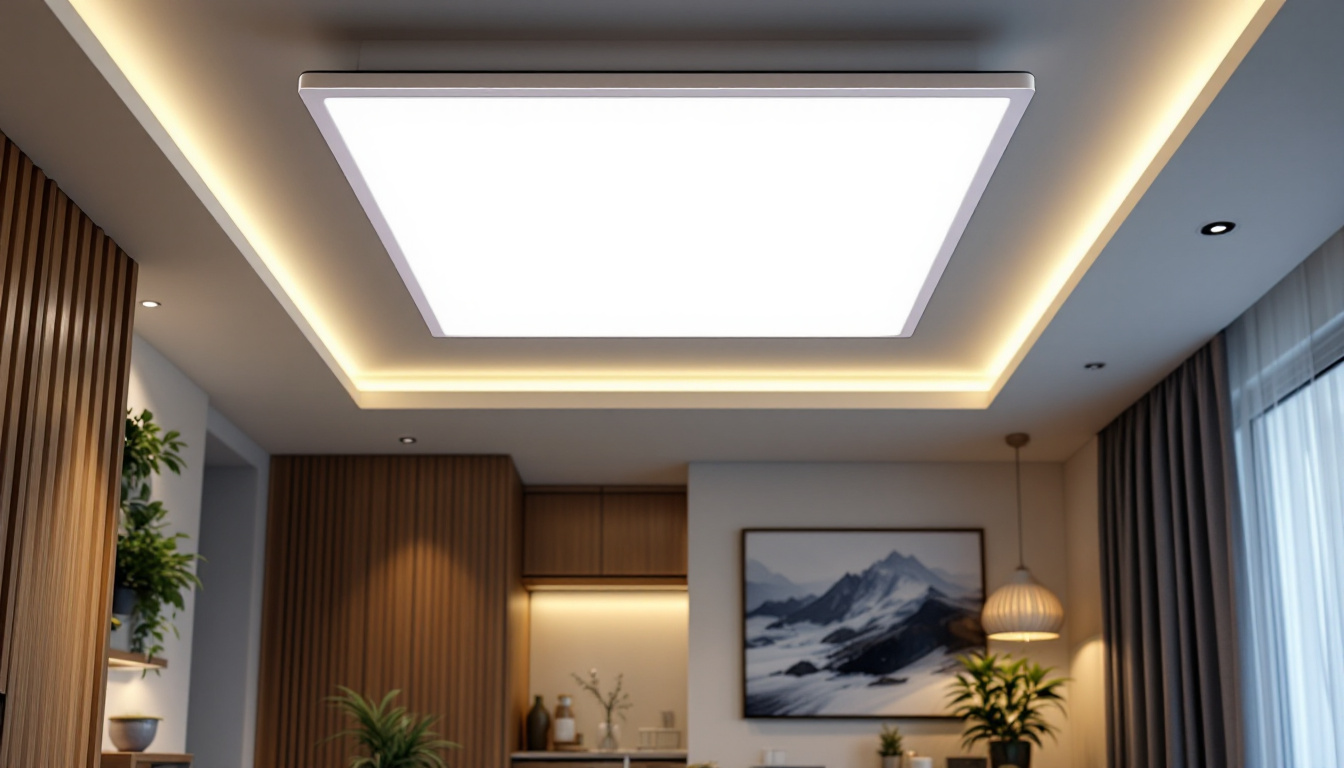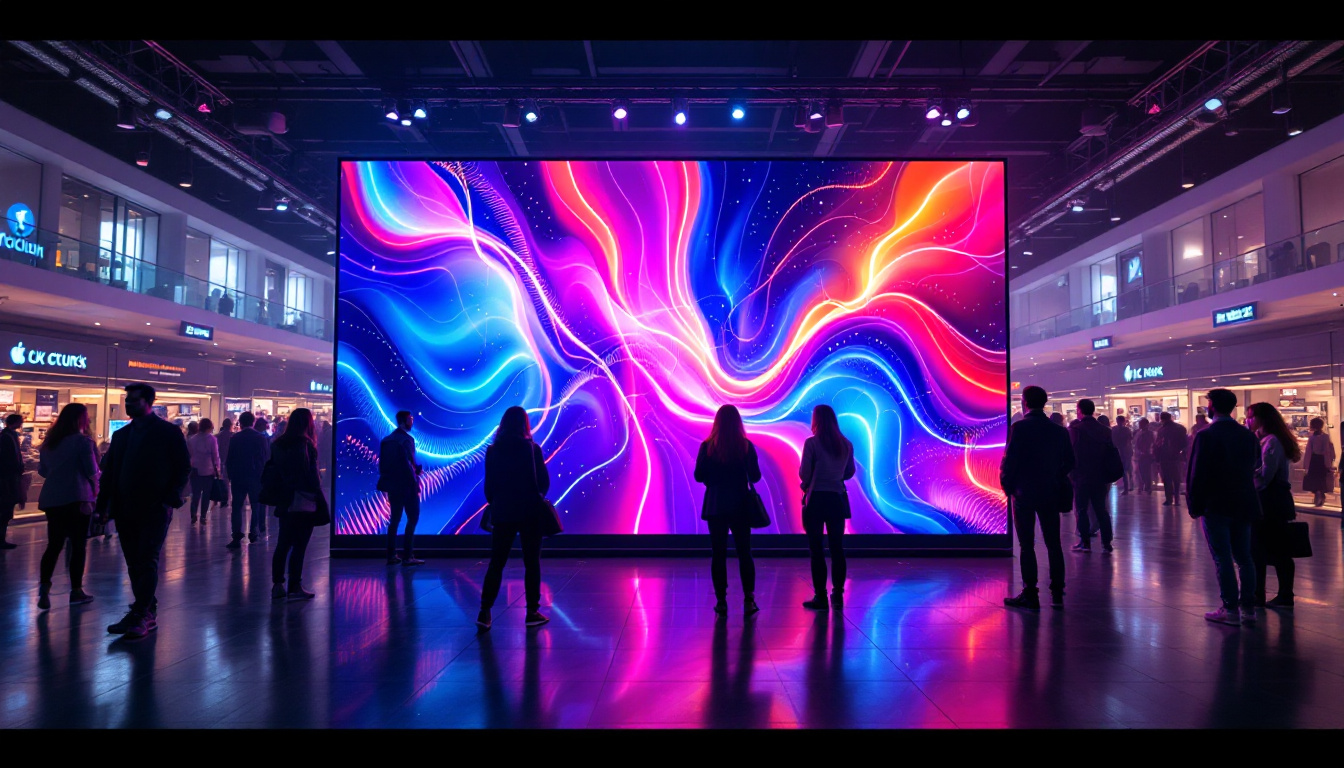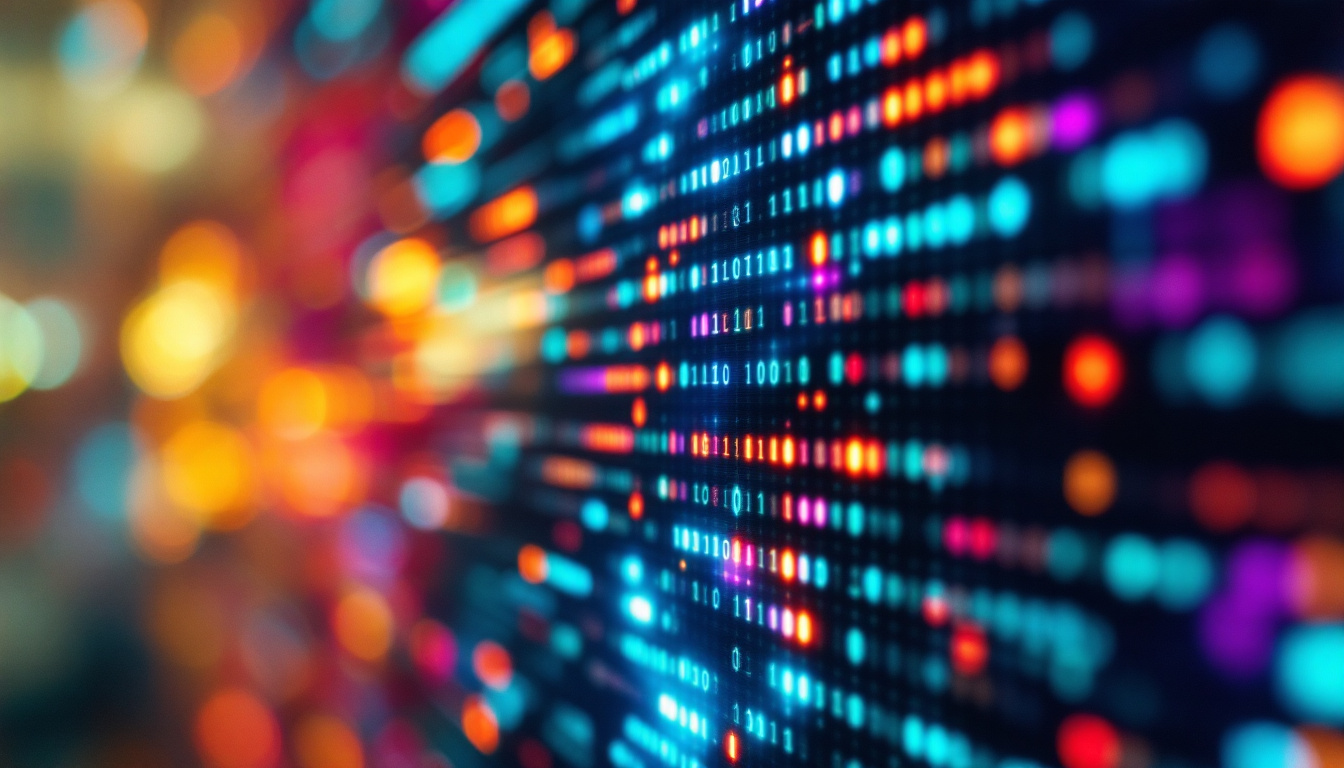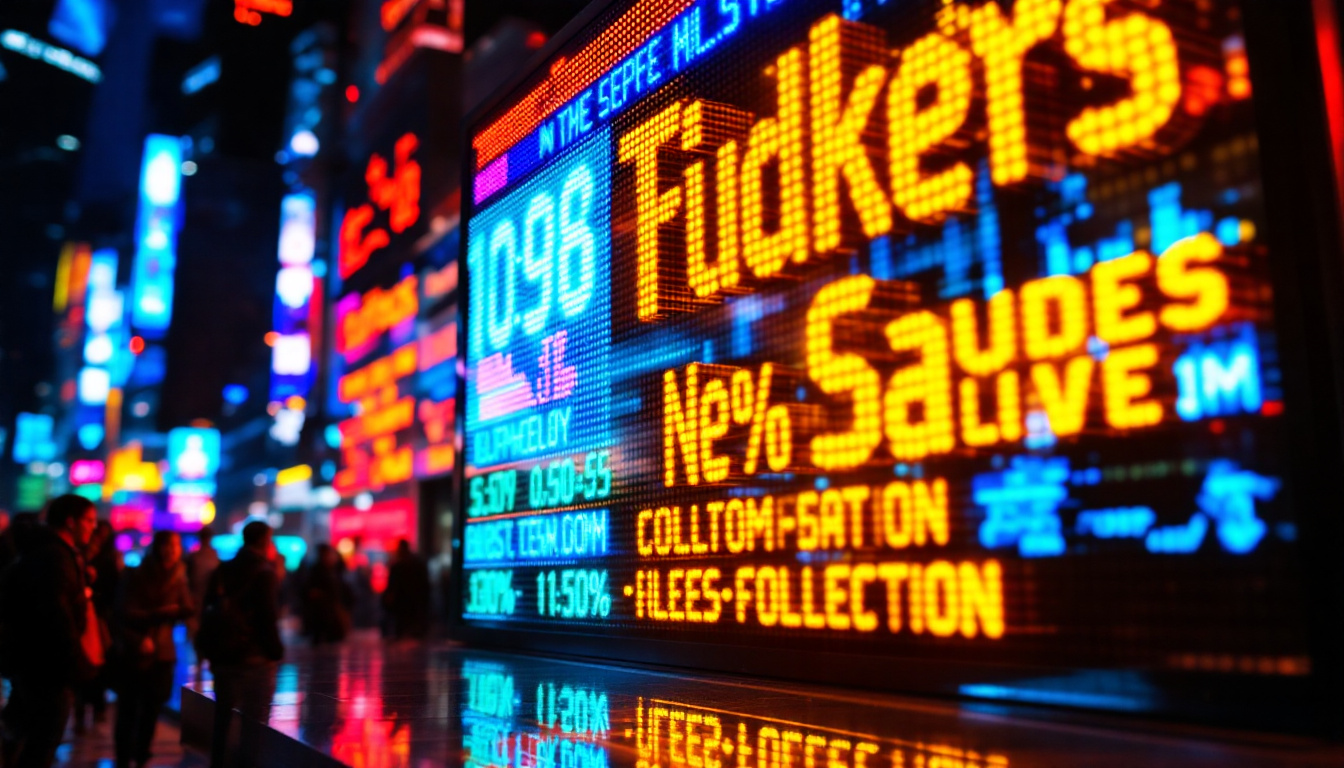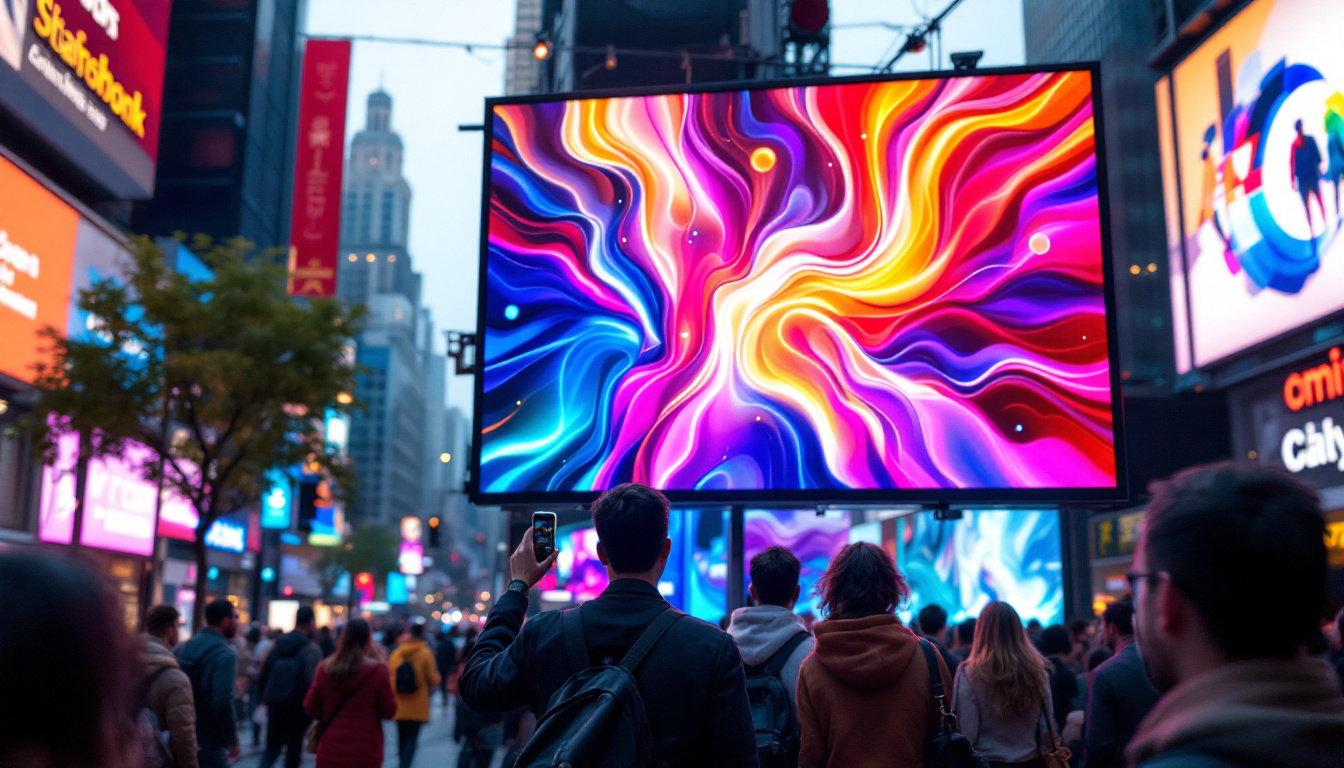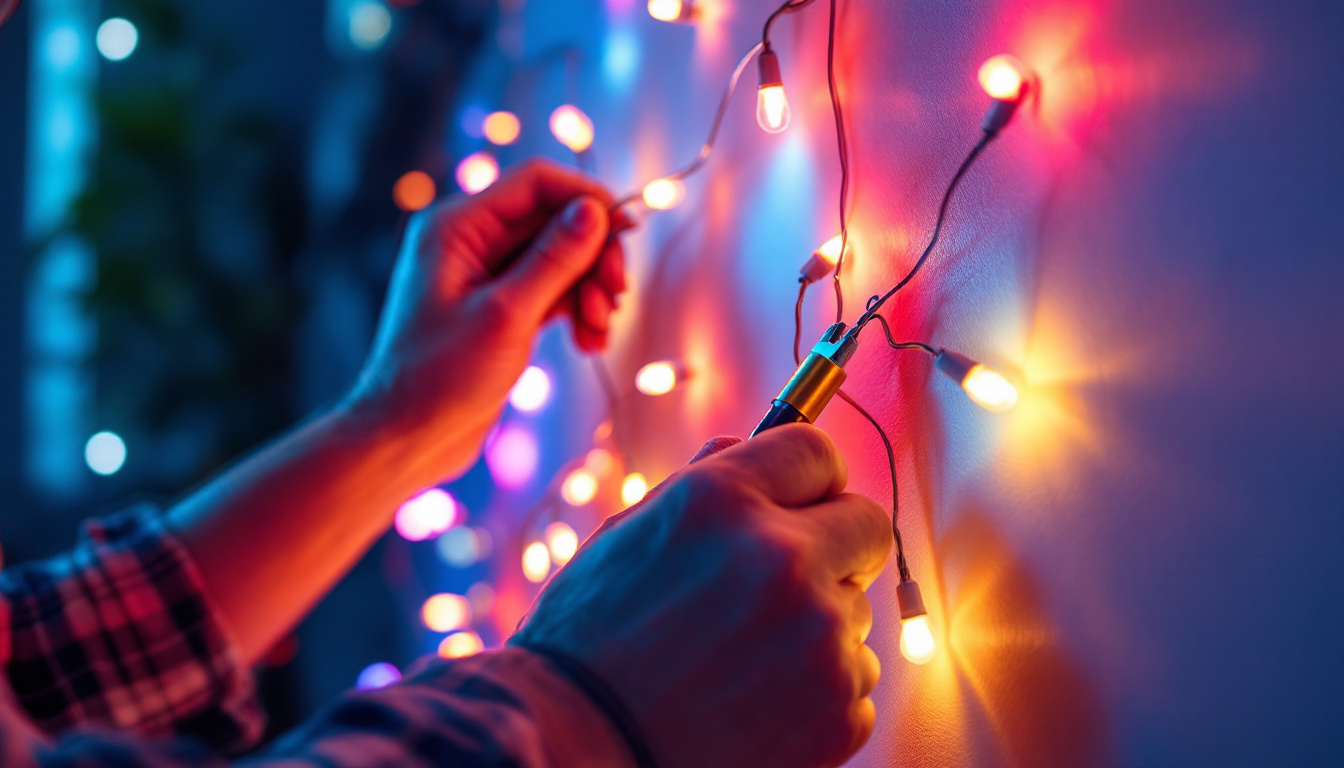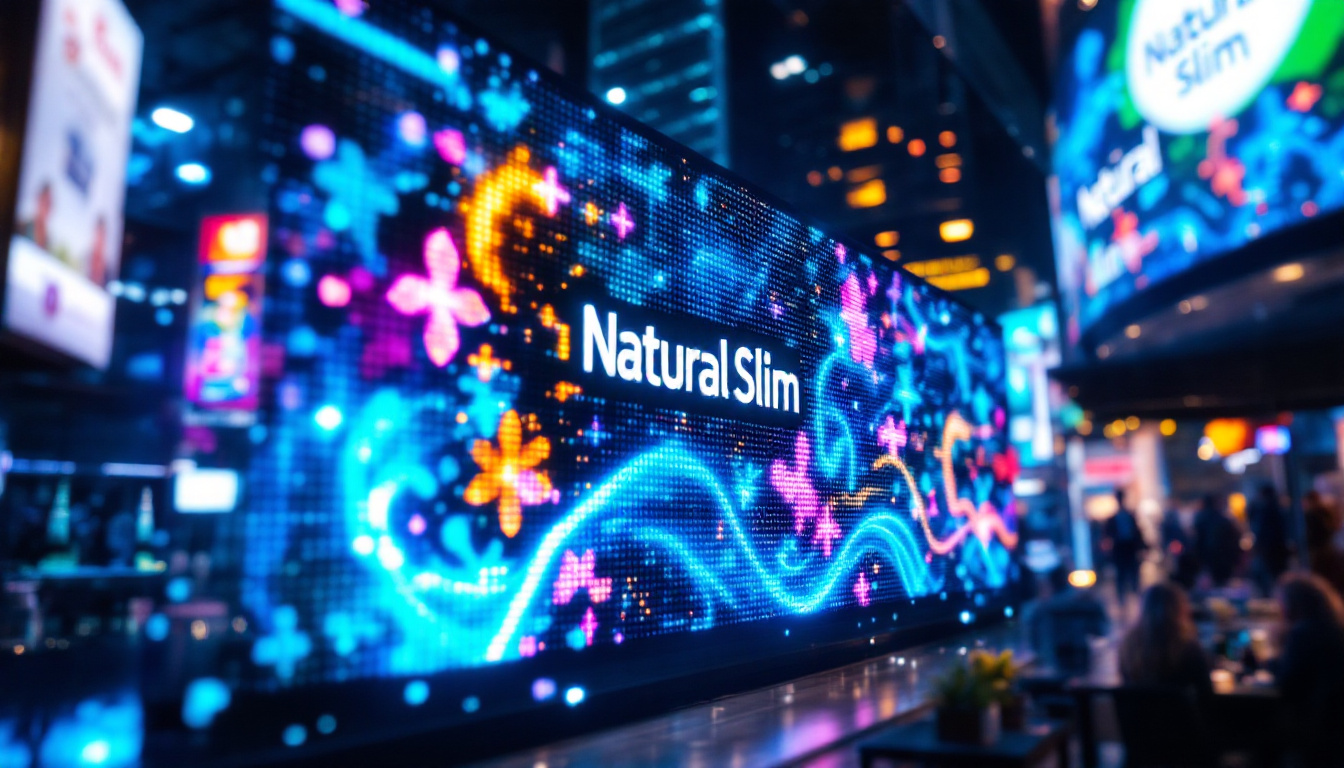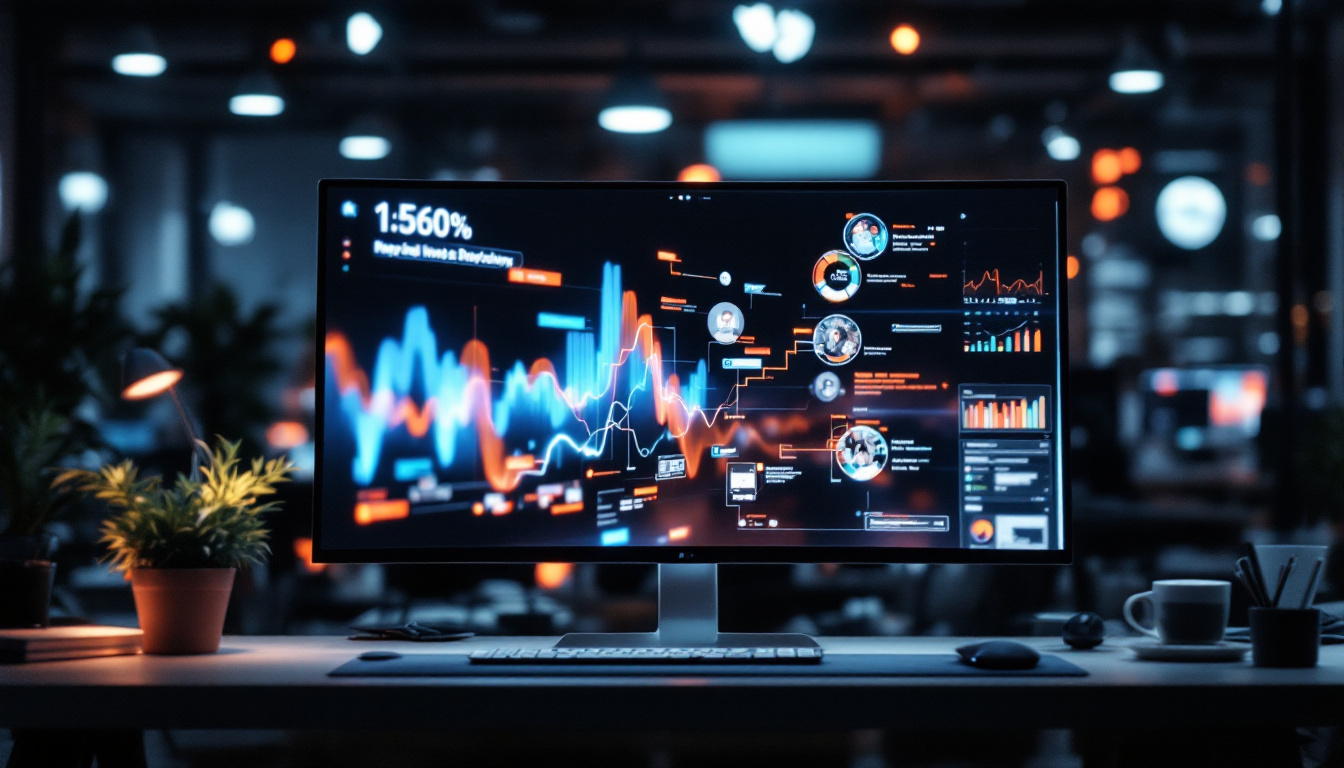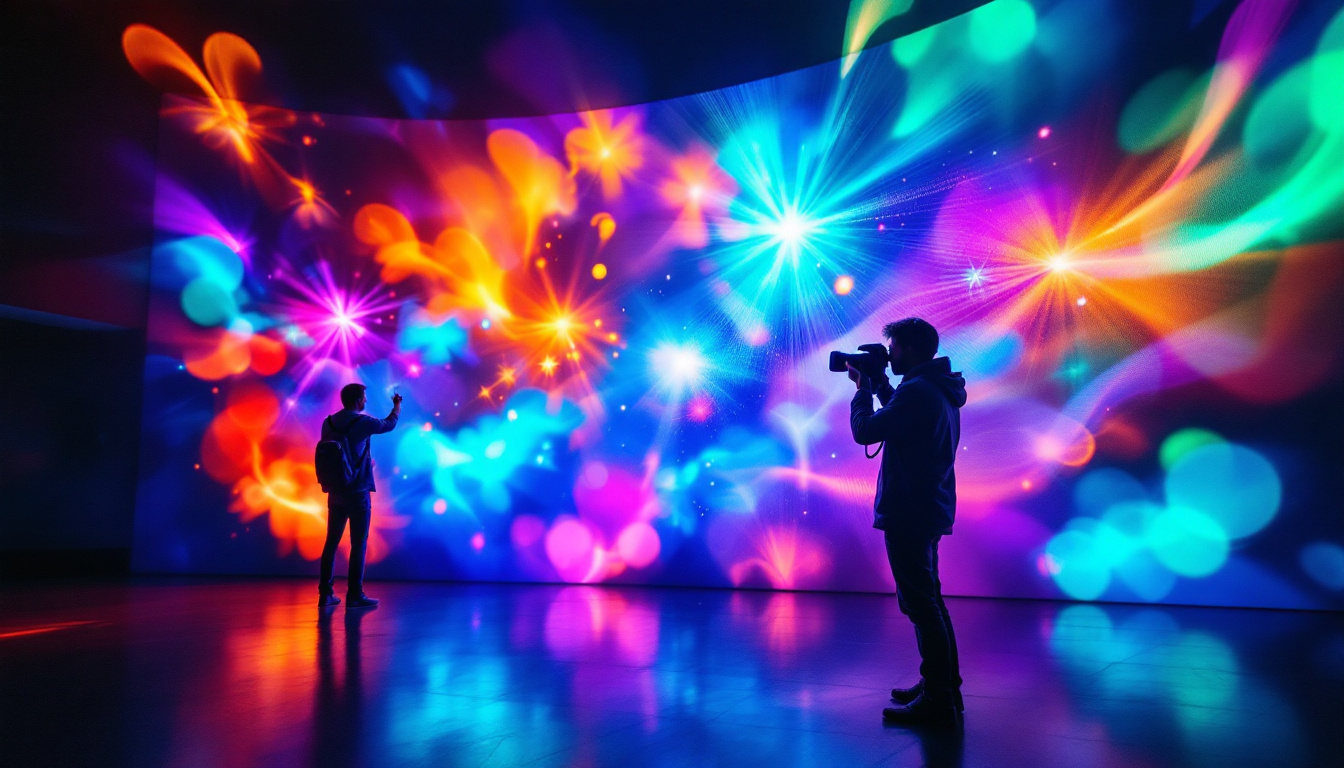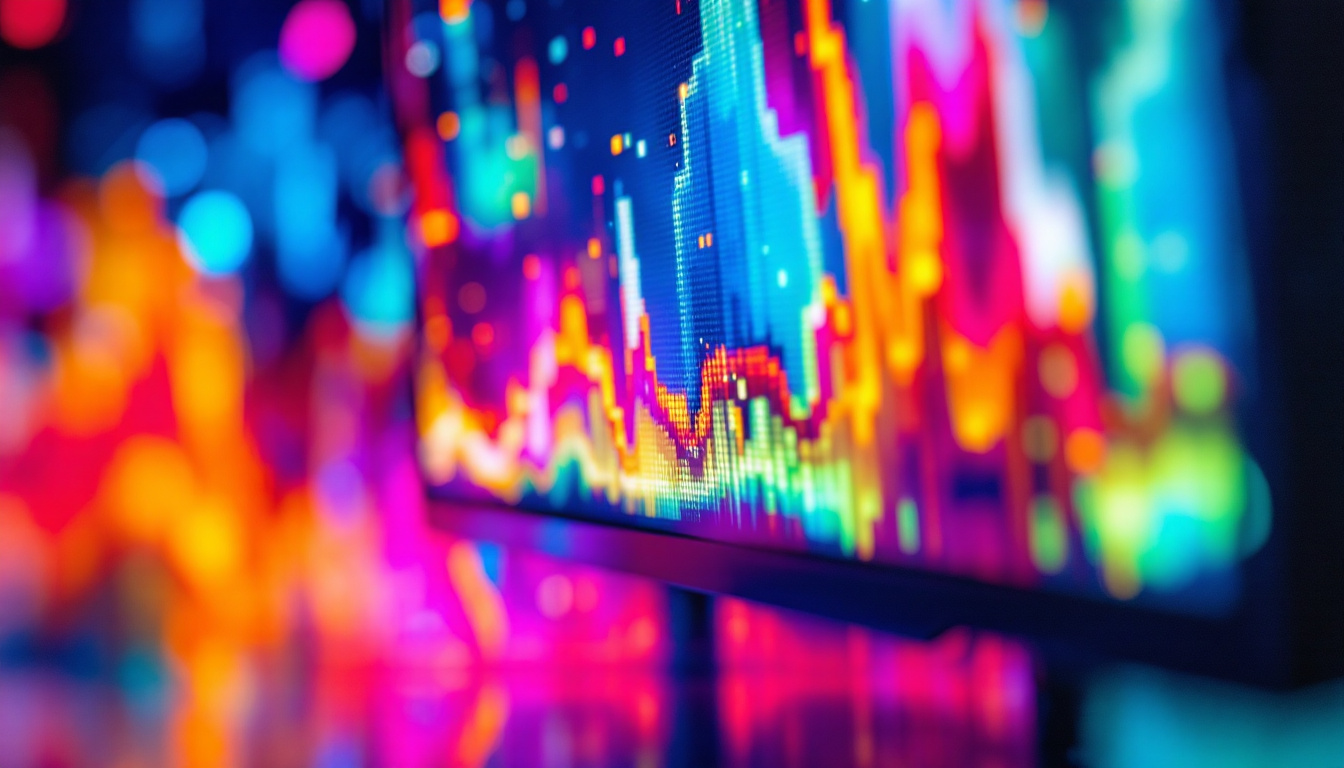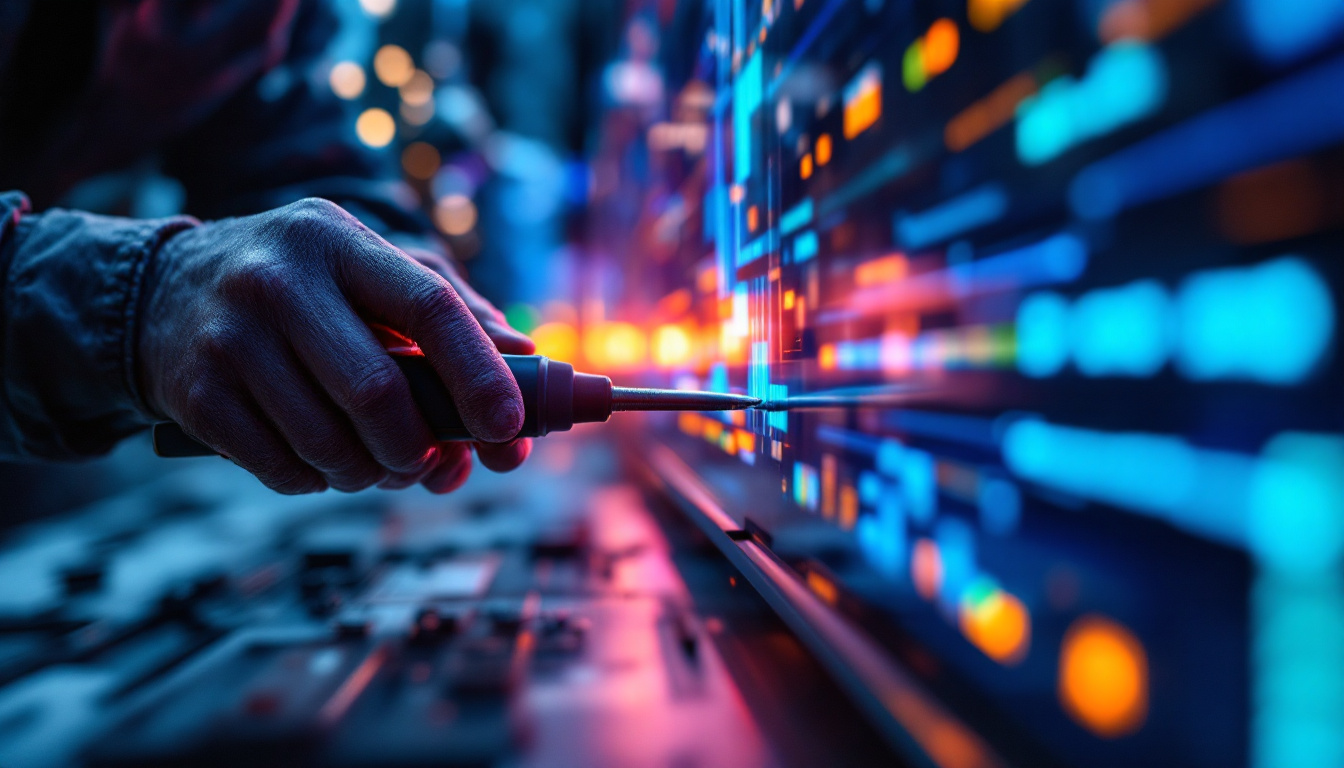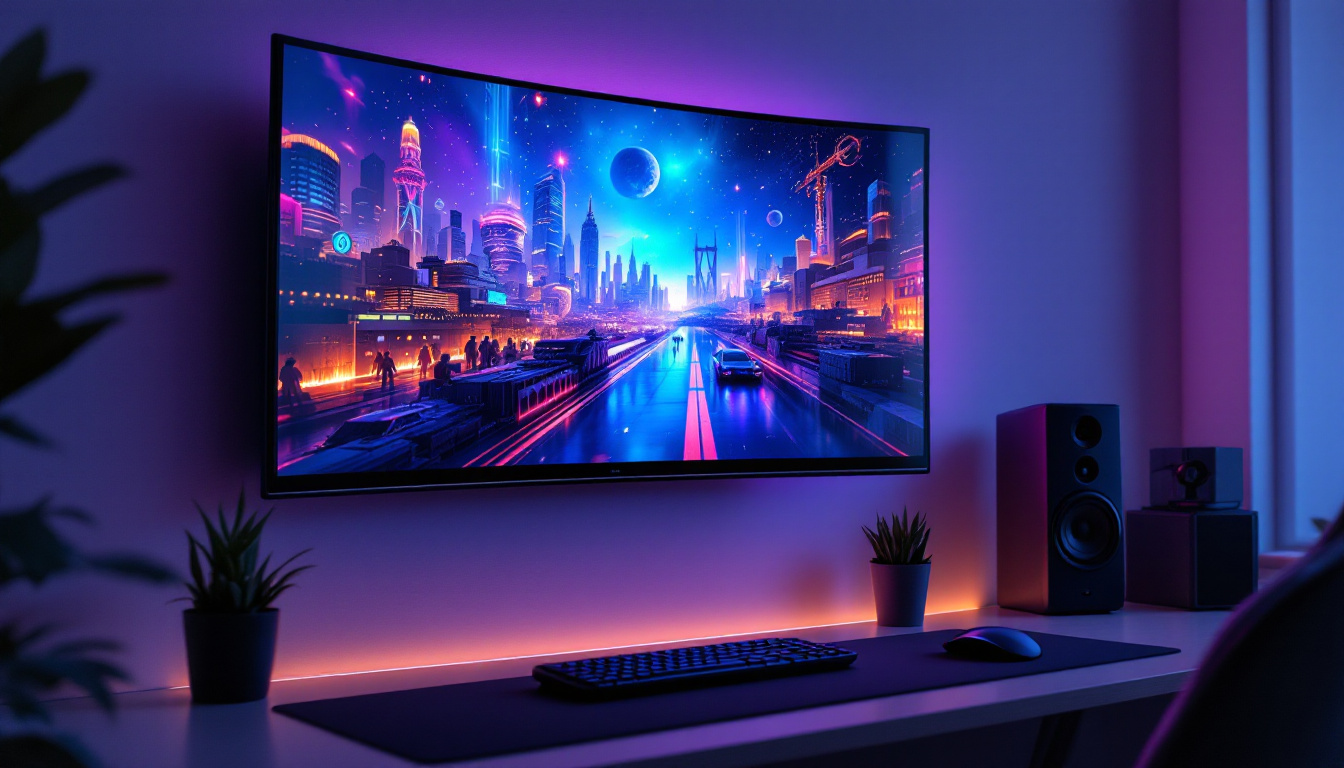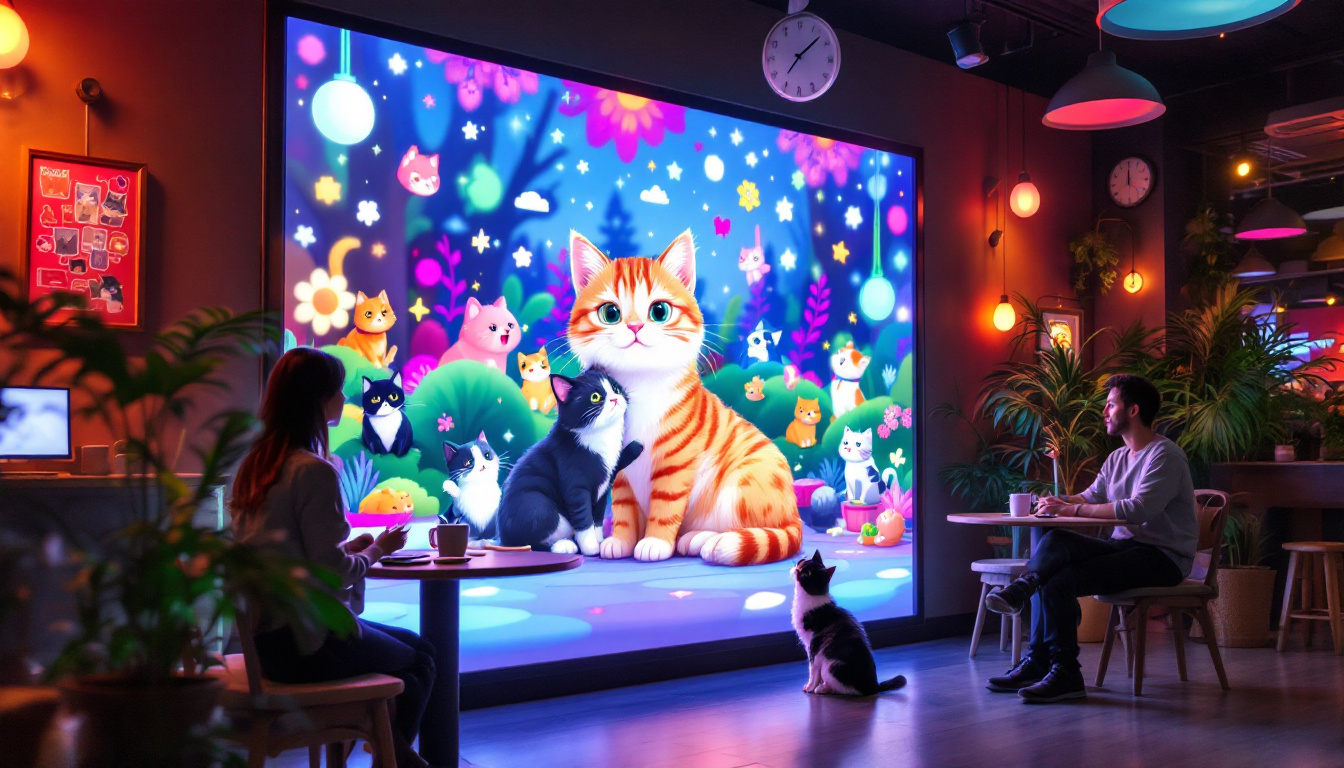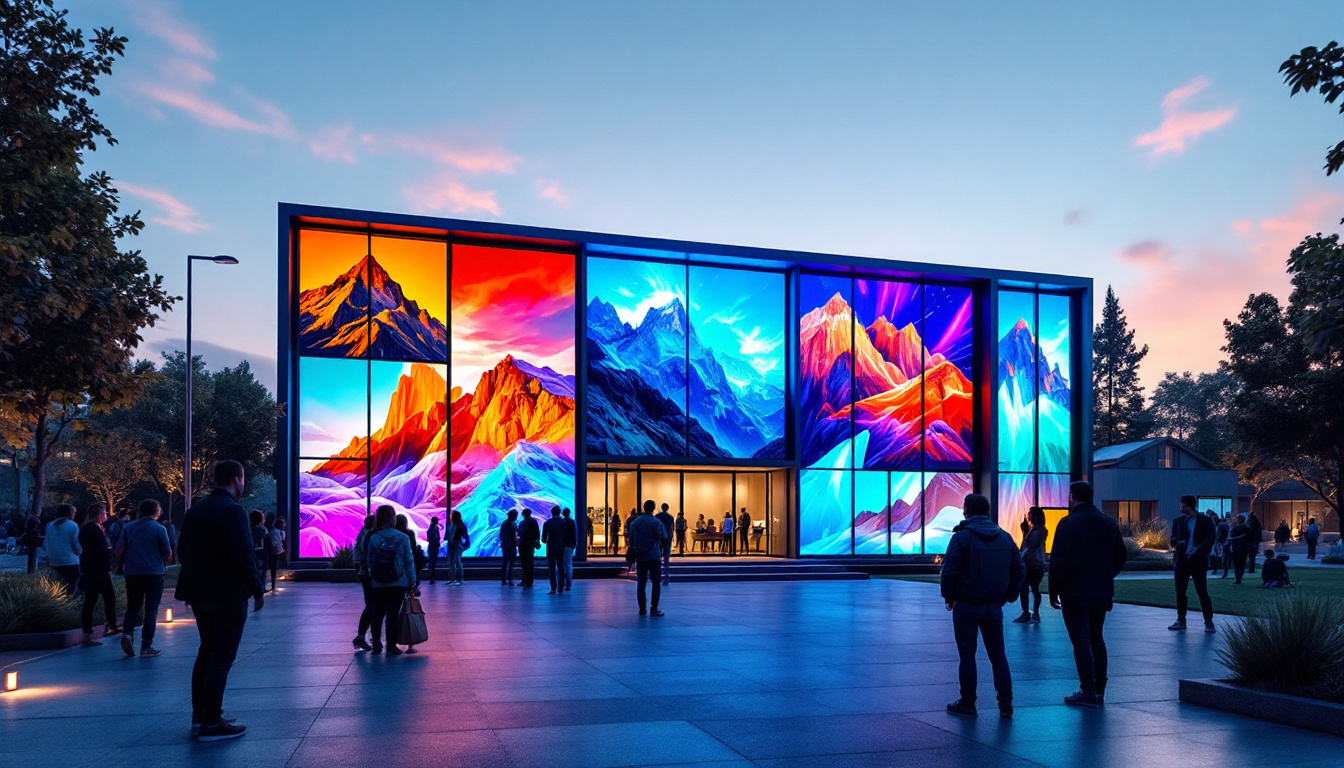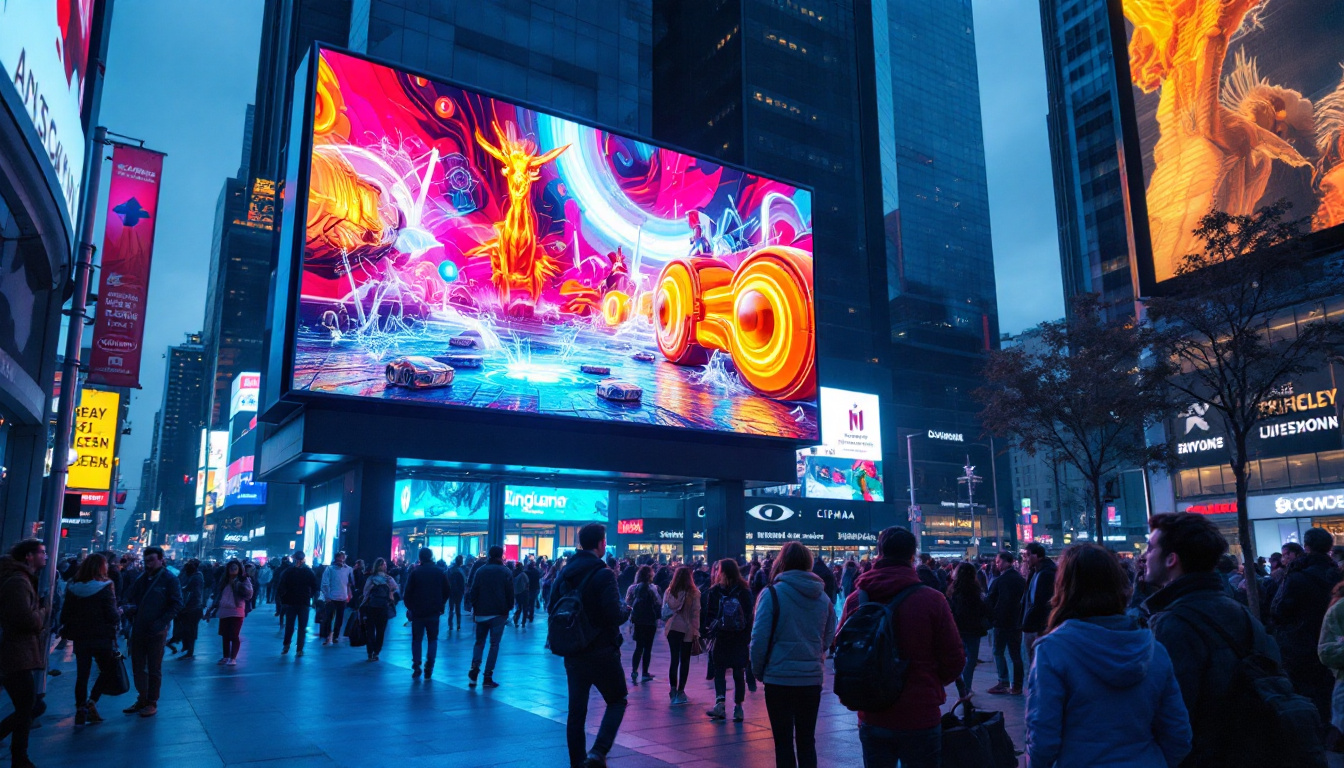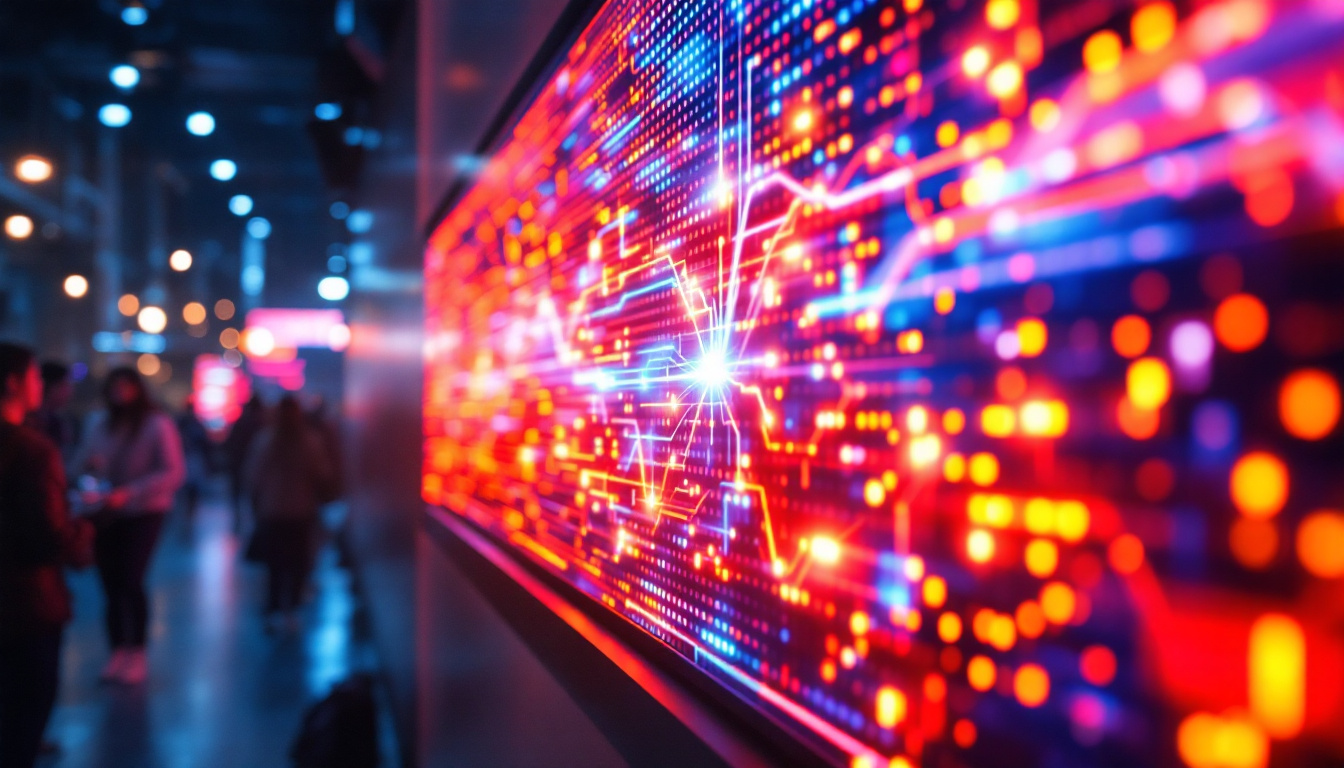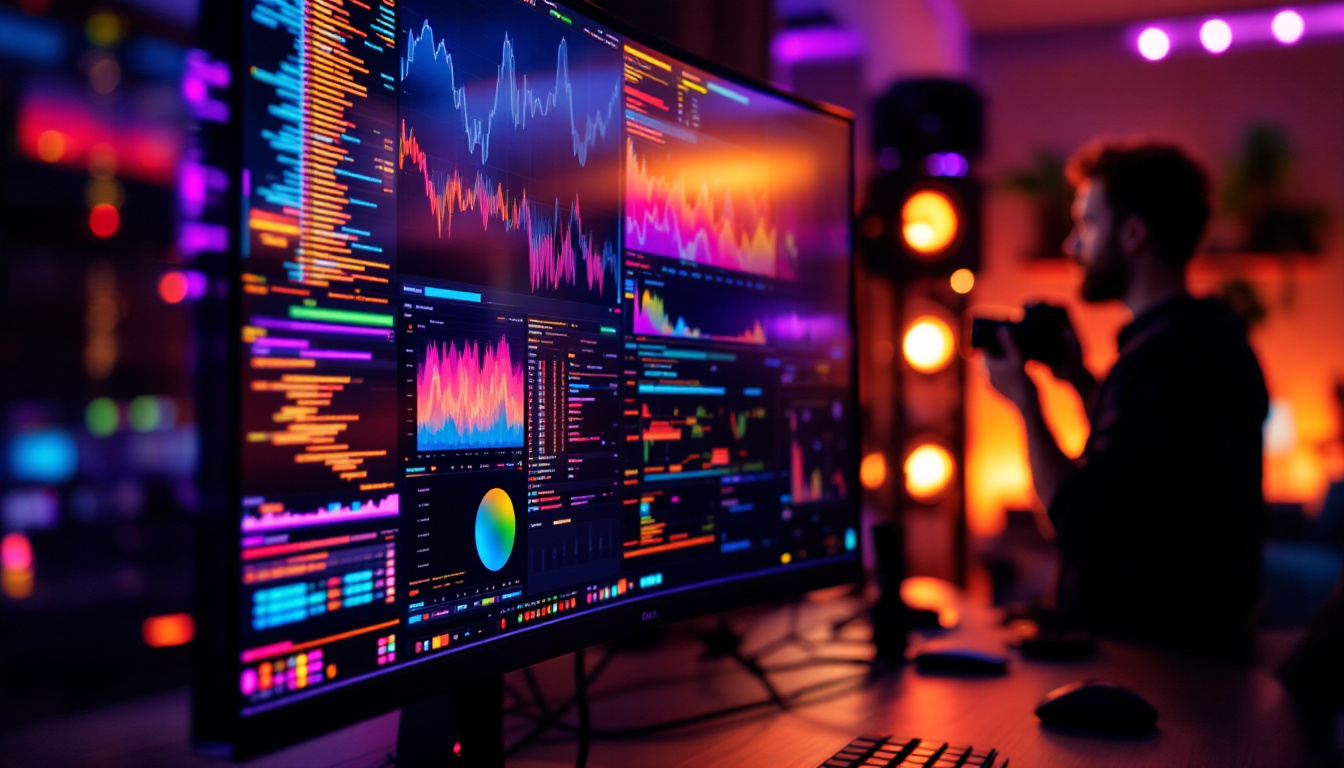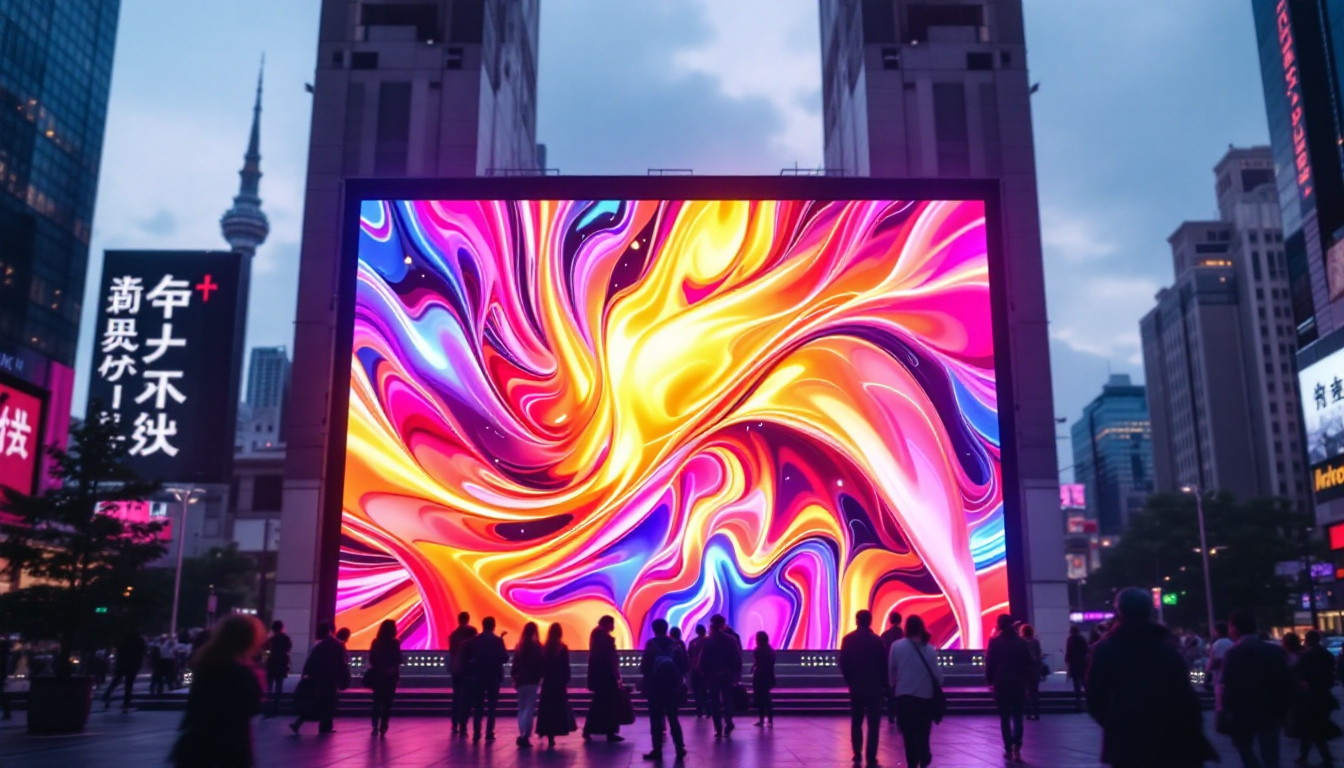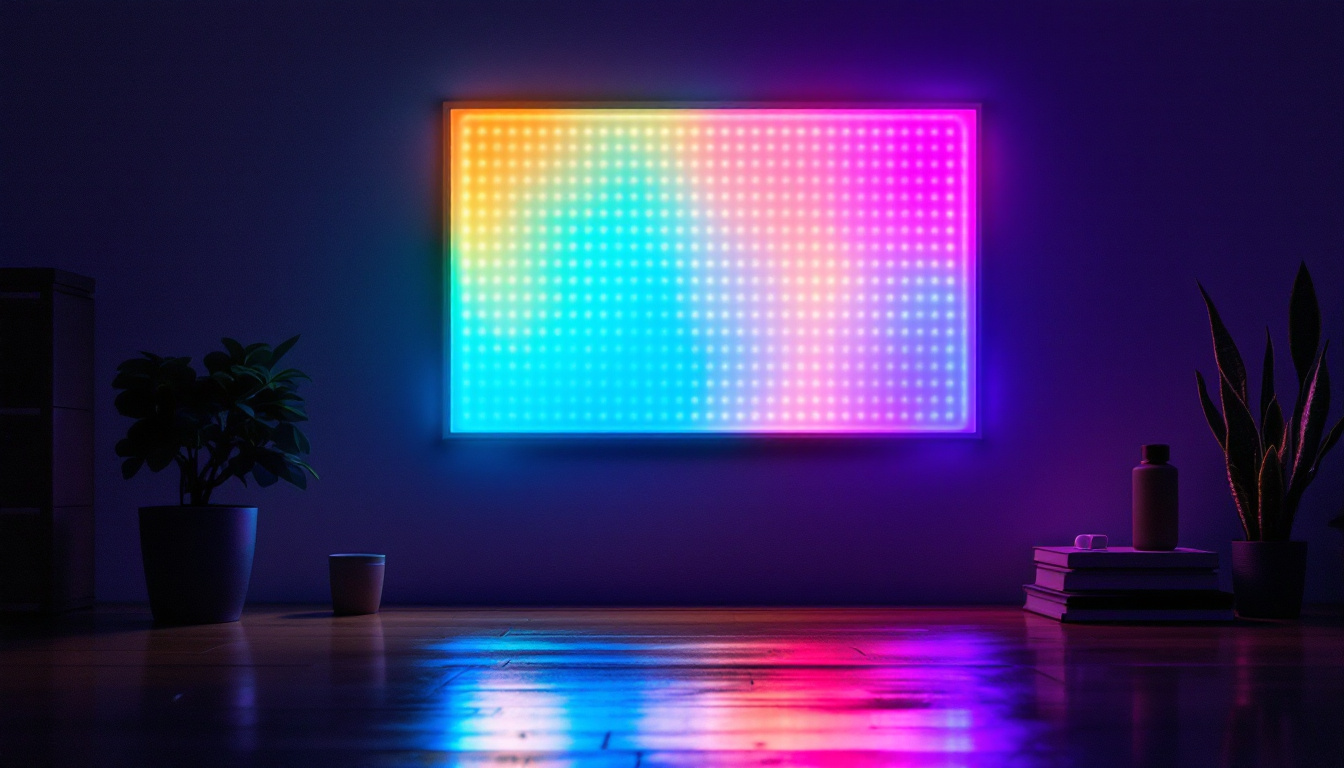In the ever-evolving landscape of technology, LED displays have emerged as a cornerstone of modern visual communication. From advertising billboards to television screens, these displays offer unparalleled brightness, clarity, and energy efficiency. This article delves into the intricacies of LED displays, exploring their types, applications, advantages, and future trends.
Understanding LED Technology
LED, or Light Emitting Diode, is a semiconductor device that emits light when an electric current passes through it. This technology has revolutionized the way we perceive light and color in various applications, particularly in display technology. The impact of LEDs extends beyond just lighting; they have transformed industries ranging from automotive to agriculture, providing innovative solutions that enhance efficiency and effectiveness.
The Basics of LED Functionality
LEDs work on a simple principle: when electrons move through a semiconductor material, they release energy in the form of photons, which is visible light. This process is highly efficient, making LEDs a preferred choice for lighting and display solutions. Unlike traditional incandescent bulbs, which waste a significant amount of energy as heat, LEDs convert a much higher percentage of electricity into light, resulting in lower energy consumption and longer lifespans.
The color of the light emitted by an LED depends on the materials used in the semiconductor. For instance, different combinations of gallium, arsenic, and phosphor can produce a wide spectrum of colors, allowing for vibrant displays. Furthermore, advancements in LED technology have led to the development of tunable white light LEDs, which can adjust their color temperature, providing users with the flexibility to create the perfect ambiance for any environment.
Types of LED Displays
LED displays come in various forms, each suited for specific applications. The most common types include:
- Direct View LED Displays: These are composed of individual LED modules that form a larger screen. They are often used in outdoor advertising due to their high brightness and visibility. Their ability to maintain clarity in bright sunlight makes them ideal for billboards and large-scale signage.
- LED Backlit Displays: These displays utilize LEDs as a backlight for LCD screens, enhancing brightness and contrast. They are commonly found in televisions and computer monitors. The use of LED backlighting has allowed manufacturers to create thinner, lighter screens while improving energy efficiency.
- Organic LED (OLED) Displays: OLED technology uses organic compounds that emit light when an electric current is applied. These displays offer superior color accuracy and contrast, making them popular in high-end smartphones and televisions. Additionally, OLEDs can be made flexible, opening up new possibilities for innovative design in consumer electronics.
Moreover, the rise of MicroLED technology represents the next frontier in display innovation. MicroLEDs are tiny, self-emissive LEDs that promise even greater efficiency and picture quality than their predecessors. With the potential for seamless, ultra-high-definition displays, MicroLEDs could redefine the future of screens in everything from virtual reality headsets to large-scale digital art installations.
Applications of LED Displays
LED displays have found their way into numerous sectors, transforming how information is conveyed and consumed. Their versatility allows them to be utilized in various environments, from commercial to industrial settings.
Advertising and Marketing
One of the most prominent applications of LED displays is in advertising. Billboards, storefronts, and public transportation hubs leverage the brightness and dynamic content capabilities of LED technology to capture consumer attention. The ability to change advertisements in real-time makes LED displays a powerful tool for marketers.
Moreover, digital signage powered by LED technology can enhance customer engagement by providing interactive content and real-time information, such as promotions or event schedules. This interactivity can extend to touch screens and QR codes, allowing consumers to engage directly with the content displayed, thus creating a more personalized shopping experience. retailers can also analyze customer behavior through data collected from these interactions, tailoring their marketing strategies to better meet consumer needs.
Entertainment and Events
In the entertainment industry, LED displays play a crucial role in creating immersive experiences. Concerts, sporting events, and festivals utilize large LED screens to broadcast live footage, enhancing audience engagement. The vibrant colors and high refresh rates of LED technology ensure that visuals remain sharp and captivating, even from a distance.
Additionally, LED walls are increasingly used in theaters and cinemas, providing dynamic backgrounds and effects that enrich the storytelling experience. The integration of LED technology allows for seamless transitions between scenes, creating a more fluid narrative and drawing viewers deeper into the story. Furthermore, with advancements in 3D LED displays, audiences can now enjoy a more lifelike experience, making events more memorable and visually stunning.
Transportation and Safety
LED displays are also integral to transportation systems. They are employed in traffic signals, electronic billboards, and information boards at airports and train stations. These displays provide crucial information to travelers, such as flight statuses, train schedules, and traffic updates, ensuring smooth operations and enhanced safety.
Furthermore, LED technology contributes to road safety by improving visibility during nighttime and adverse weather conditions, making it easier for drivers to navigate. In addition to enhancing safety, LED displays are being utilized in smart city initiatives, where they can provide real-time updates on traffic conditions, public transport schedules, and even emergency alerts. This integration not only aids in efficient urban planning but also fosters a sense of community by keeping citizens informed and connected to their environment.
Advantages of LED Displays
The rise of LED displays can be attributed to several key advantages that set them apart from traditional display technologies. Understanding these benefits helps to appreciate why LED displays are becoming the standard in various applications.
Energy Efficiency
One of the most significant advantages of LED displays is their energy efficiency. Compared to traditional incandescent or fluorescent displays, LEDs consume significantly less power while providing higher brightness levels. This efficiency translates to lower energy bills and a reduced carbon footprint, making them an environmentally friendly choice.
Longevity and Durability
LED displays are known for their longevity. With a lifespan of up to 100,000 hours, they outlast many other display technologies. This durability reduces the need for frequent replacements, resulting in lower maintenance costs over time.
Moreover, LED displays are more resistant to shock and vibration, making them suitable for various environments, including outdoor settings and high-traffic areas.
High Quality and Versatility
LED displays offer exceptional image quality, with high contrast ratios and vibrant colors. This quality makes them ideal for applications that require precise visual representation, such as medical imaging and high-definition video displays.
Additionally, their modular design allows for flexibility in size and shape, enabling creative installations that can adapt to different spaces and requirements.
Challenges and Considerations
While LED displays offer numerous advantages, they are not without challenges. Understanding these considerations is essential for making informed decisions regarding their use.
Initial Costs
The initial investment for LED display technology can be higher than traditional display options. This upfront cost may deter some businesses from making the switch. However, it is essential to consider the long-term savings on energy and maintenance, which can offset the initial expenditure.
Heat Generation
LED displays generate heat during operation, which can affect performance if not managed properly. Adequate cooling systems are necessary to maintain optimal functioning and prevent overheating, particularly in large installations.
Proper installation and placement can mitigate these issues, ensuring that LED displays operate efficiently and effectively.
Viewing Angles and Distance
While LED displays are known for their brightness, viewing angles can vary depending on the type of display. Direct view LED screens may have limited viewing angles, which can affect visibility for some audiences. Understanding the intended viewing distance and angle is crucial for optimal placement.
The Future of LED Displays
As technology continues to advance, the future of LED displays looks promising. Innovations in design, functionality, and efficiency are set to redefine how these displays are utilized across various sectors.
Integration with Smart Technology
One of the most exciting trends in LED display technology is its integration with smart technology. As the Internet of Things (IoT) continues to expand, LED displays are increasingly being connected to networks, allowing for real-time updates and interactive content.
This integration enables businesses to tailor their messaging based on audience behavior and preferences, enhancing engagement and effectiveness.
Advancements in Resolution and Color Accuracy
Future developments in LED technology are expected to focus on improving resolution and color accuracy. Higher pixel densities will lead to sharper images and more vibrant colors, making LED displays even more appealing for applications requiring high-quality visuals.
Additionally, advancements in organic LED (OLED) technology may further enhance display capabilities, providing even greater contrast and color depth.
Environmental Considerations
As sustainability becomes a focal point for many industries, LED displays are likely to evolve to meet environmental standards. Innovations aimed at reducing energy consumption and utilizing recyclable materials will be at the forefront of future developments.
These efforts not only align with global sustainability goals but also cater to the growing demand for eco-friendly products among consumers.
Conclusion
LED displays have transformed the way information is conveyed, offering unparalleled brightness, energy efficiency, and versatility. Their applications span various sectors, from advertising to transportation, making them an integral part of modern communication.
While challenges exist, the benefits of LED technology far outweigh the drawbacks, especially when considering long-term savings and environmental impact. As advancements continue to shape the future of LED displays, they will undoubtedly play a pivotal role in enhancing visual experiences across the globe.
In a world increasingly driven by visual communication, understanding LED technology is essential for businesses and consumers alike. Embracing this technology not only enhances engagement but also paves the way for a more connected and visually rich future.
Discover LumenMatrix LED Display Solutions
Ready to elevate your visual communication with the latest in LED technology? Look no further than LumenMatrix, a pioneer in crafting immersive LED display modules tailored for any application. Whether you’re interested in Indoor LED Wall Displays, Outdoor LED Wall Displays, or specialized solutions like Vehicle LED Displays and LED Sports Displays, LumenMatrix has you covered. Embrace the future of engagement with our captivating LED Transparent Displays and versatile All-in-One LED Displays. Visit LumenMatrix LED Display Solutions to transform your space and captivate your audience today.

